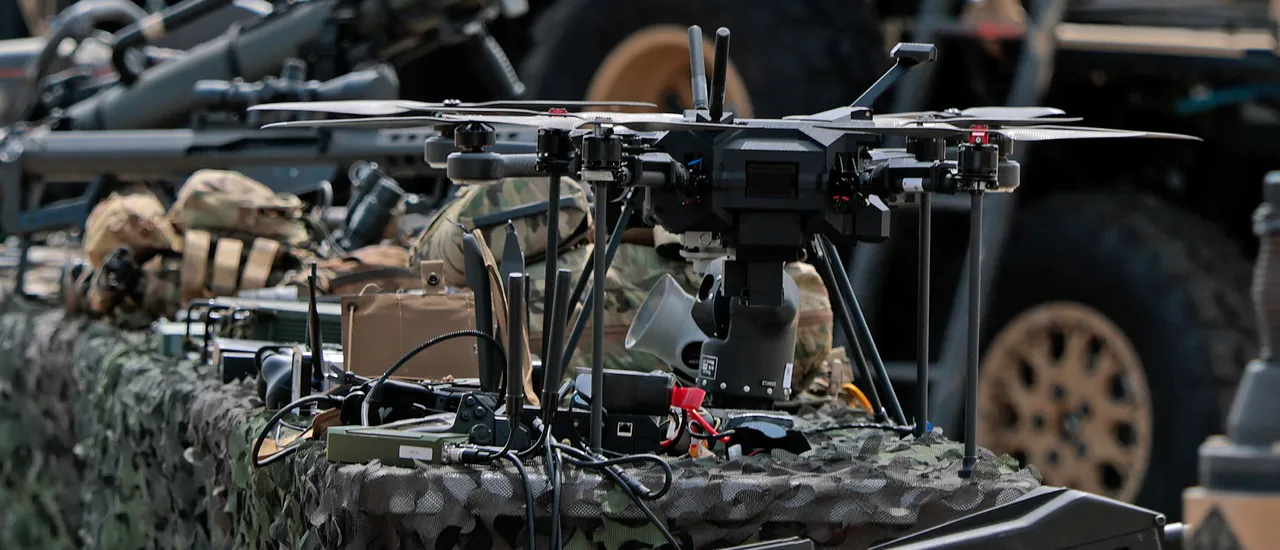The U.S. military is preparing its soldiers to take on the new, brutal doctrine of drone warfare just over 900 miles away from the Ukrainian front.
In late July, the Army launched “Project Flytrap” at Camp Kosciuszko, Poland, with the initiative designed to be a proving ground for counter-drone technology. Over the course of the exercise, the Army aimed to test the full range of options to counter drones, from the most advanced jamming technology to the most straight-forward solution available: shooting them with shotguns.
Defense Secretary Pete Hegseth issued an order in July tasking the Pentagon establish “drone dominance” by 2027, a field currently led by China, which controls 90% of the global drone market.
The Army aims to use the lessons from both the Ukraine war and the exercises to put together a plan for soldiers to deal with the modern battlefield’s most novel threat, Army officials told the Daily Caller News Foundation.
“There’s good, difficult lessons from the conflicts going on worldwide,” Col. Donald Neal, Army 2nd Cavalry regimental commander, told the DCNF. “But we have a distinct way that we want to fight as a U.S. military, as an Army, and it’s figuring out all this modern technology that’s there is and how it actually helps us be more mobile, more lethal and more survivable.” (RELATED: Hegseth Announces Pentagon Plan For ‘Drone Dominance’)

U.S. Army drones, weapons and other military equipment sit on display for U.S. President Donald Trump on June 10, 2025 in Fort Bragg, North Carolina. (Photo by Anna Moneymaker/Getty Images)
Flytrap is designed to put together a “multi-layered” drone defense protocol for soldiers in the field, employing the services of the Army V Corps, formerly Fifth Corps, to conduct testing. The project involved over 40 organizations, 400 personnel from various industries and the help of British, Polish and Australian forces.
“What we’re trying to get after is taking those latest cutting edge versions of existing technology, our [Radio Frequency] detection jam, optical sensors, audio sensors, and then merging those into a system that our soldiers on the ground can employ at a tactical setting,” Command Sergeant Maj. Eric Bol told the DCNF.
The Army tested five different systems to detect incoming drones, including passive and active radio frequency detection, active radar specially designed for drone detection, Army officials told the DCNF.
To neutralize drones, the Army tested multiple radio frequency jammers, including the My Defense Pitbull and the Anduril Industries Pulsar. Additionally, interceptor drones were tested, which can be launched from vehicles to target jamming-resistant fiber-optic drones.
To shoot down incoming drones at close ranges, some soldiers tested the “Smart shooter” SMASH specialty optic on their service rifles, which is specially designed to aid soldiers in targeting fast-moving targets such as small drones. The Army also tested a .50 caliber gun equipped with the purpose-built sight.
While the Army spared no expense in testing, it remains adamant that no one solution will not be a “silver bullet” to countering drones, and that a multi-faceted system will be the only feasible way forward.
“The fundamentals of warfare still matter, things like dispersion, protection, fortification, selecting the correct routes and planning to objectives, things like that. They remain essential,” Army Lt. Col. Jeremy Medaris told the DCNF.
Notably, the Army did not test any directed energy weapons, which are seen as some of the more advanced counter-drone weapons currently available.
Through the Flytrap project, the Army has also learned a great deal about how to utilize drones offensively, saying the exercises helped the Army understand how to skirt the “bubble” created by modern countermeasures.
Just around 900 miles away from the U.S. Army’s testing, the bloody, brutal reality of drone warfare is on full display on the front of the Russia-Ukraine war.
Heavy use of drones in the Ukraine war has caused significant civilian casualties, with Russian drones estimated to have caused over 3,000 excess civilian casualties from the beginning of the war to April 2025, according to the United Nations. One concern for the U.S. involves foreign adversaries launching drone attack from inside the U.S. mainland, much like Ukraine did in early June when drones were smuggled into Russia to cripple the nation’s strategic bomber reserves.
The U.S. is currently not equipped to defend against such an attack, and would likely result in mass damage to military and civilian infrastructure, experts previously told the DCNF.
The Pentagon made a substantial investment in furthering drone technology use and research in the armed services in July. Military leaders, under the new initiative, may order “large purchases” of drones and their components if they comply with the Defense Innovation Unit (DIU) Blue List, which vets components and units for drone systems to ensure they do not originate from banned nations like China.
The U.S. currently employs mostly high-cost drones such as the MQ-9 Reaper, which costs around $56.5 million to build per unit, according to the Air Force. However, the new initiative from the Pentagon focuses on low-cost, comparatively expendable drones, with groups such as the Houthi rebels in Yemen demonstrating the effectiveness.
Some of the rebels’ drones cost as little as $2,000 a unit, according to analysts who spoke to Politico.
“Lessons learned from recent conflicts highlighted this critical capability gap, and we’re looking for Project Flytrap to directly address those,” Colonel Matt Davis, the V Corps transformation chief, told the DCNF.
All content created by the Daily Caller News Foundation, an independent and nonpartisan newswire service, is available without charge to any legitimate news publisher that can provide a large audience. All republished articles must include our logo, our reporter’s byline and their DCNF affiliation. For any questions about our guidelines or partnering with us, please contact licensing@dailycallernewsfoundation.org.





![Gavin Newsom Threatens to 'Punch These Sons of B*thces in the Mouth' [WATCH]](https://www.right2024.com/wp-content/uploads/2025/08/Gavin-Newsom-Threatens-to-Punch-These-Sons-of-Bthces-in-350x250.jpg)
![ICE Arrests Illegal Alien Influencer During Her Livestream in Los Angeles: ‘You Bet We Did’ [WATCH]](https://www.right2024.com/wp-content/uploads/2025/08/ICE-Arrests-Illegal-Alien-Influencer-During-Her-Livestream-in-Los-350x250.jpg)








